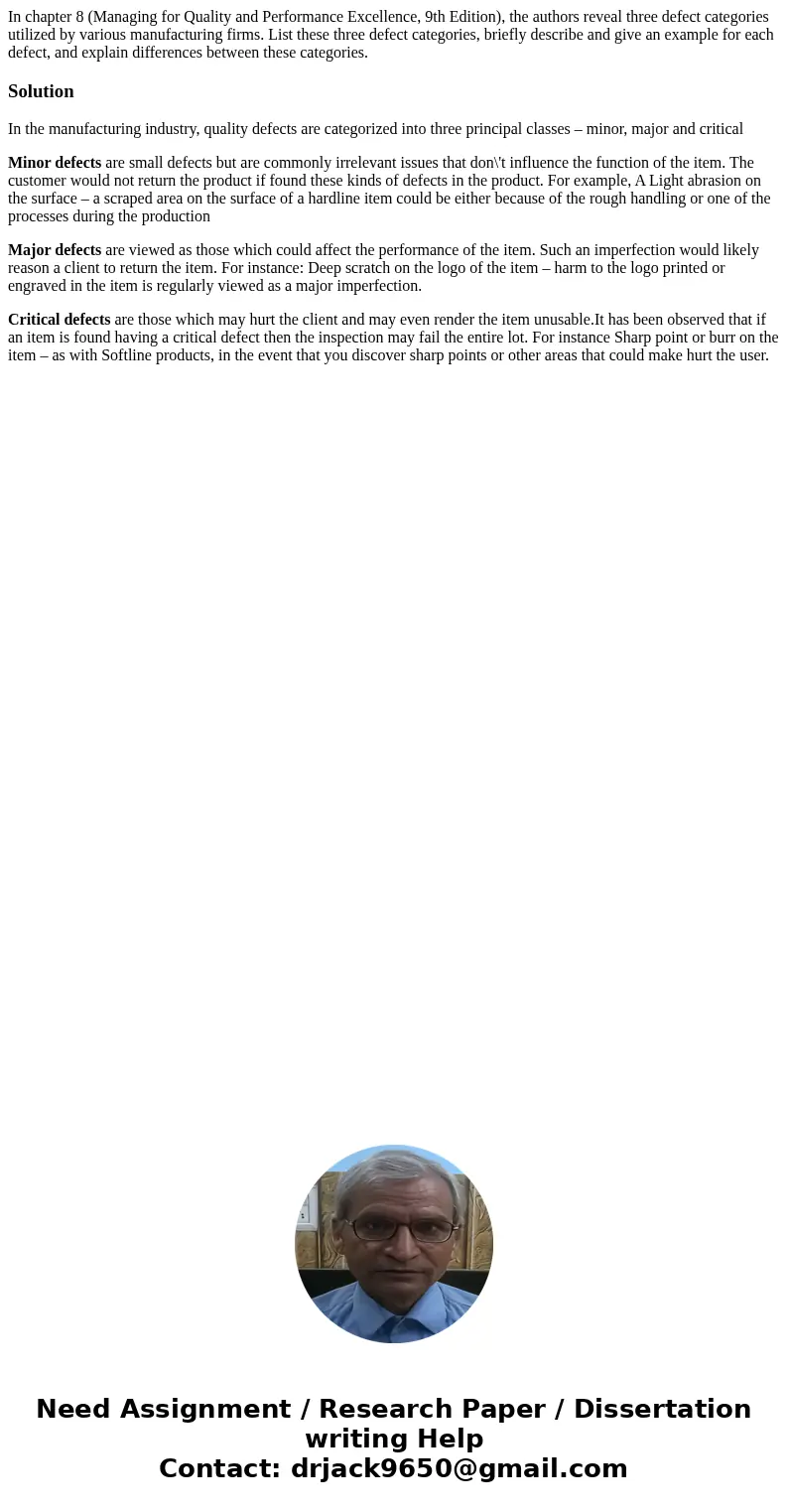In chapter 8 Managing for Quality and Performance Excellence
In chapter 8 (Managing for Quality and Performance Excellence, 9th Edition), the authors reveal three defect categories utilized by various manufacturing firms. List these three defect categories, briefly describe and give an example for each defect, and explain differences between these categories.
Solution
In the manufacturing industry, quality defects are categorized into three principal classes – minor, major and critical
Minor defects are small defects but are commonly irrelevant issues that don\'t influence the function of the item. The customer would not return the product if found these kinds of defects in the product. For example, A Light abrasion on the surface – a scraped area on the surface of a hardline item could be either because of the rough handling or one of the processes during the production
Major defects are viewed as those which could affect the performance of the item. Such an imperfection would likely reason a client to return the item. For instance: Deep scratch on the logo of the item – harm to the logo printed or engraved in the item is regularly viewed as a major imperfection.
Critical defects are those which may hurt the client and may even render the item unusable.It has been observed that if an item is found having a critical defect then the inspection may fail the entire lot. For instance Sharp point or burr on the item – as with Softline products, in the event that you discover sharp points or other areas that could make hurt the user.

 Homework Sourse
Homework Sourse